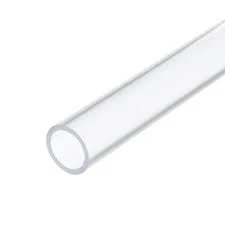נוב . 16, 2024 12:50 Back to list
waste pipe fittings
Understanding Waste Pipe Fittings An Essential Guide for Homeowners and Plumbers
Waste pipe fittings play a crucial role in plumbing systems, directing wastewater away from sinks, bathtubs, toilets, and other fixtures. These fittings are essential for maintaining a hygienic environment in homes and businesses, as they ensure that waste is efficiently carried away from the premises. Whether you are a homeowner looking to understand your plumbing system better or a plumber seeking to enhance your knowledge of waste fittings, this article will provide you with a comprehensive overview.
What are Waste Pipe Fittings?
Waste pipe fittings refer to a variety of components—including pipes, elbows, tees, and connectors—that are used to assemble a plumbing system designed for transporting wastewater. These fittings are typically made from durable materials such as PVC, ABS, or cast iron, chosen for their resistance to corrosion, chemical reactions, and mechanical stresses.
Types of Waste Pipe Fittings
1. P-Traps A P-trap is a U-shaped plumbing fitting that holds a small amount of water, creating a seal that prevents sewer gases from entering living spaces. They are commonly used under sinks and are essential for odor control.
2. Wyes and Tees Wyes and tees are used to create junctions where pipes split into two directions or combine. A wye fitting is typically used to join pipes at a 45-degree angle, while tees allow for a straight connection.
3. Elbows Elbow fittings change the direction of a pipe, allowing for flexible routing around obstacles in the plumbing system. They come in various angles, with 90-degree and 45-degree elbows being the most common.
4. Reducers and Adapters These fittings are used to connect pipes of different diameters, ensuring that the flow of water remains efficient even when transitioning from a larger pipe to a smaller one.
5. Caps and Plugs Caps are used to seal the end of a pipe, while plugs can be used to temporarily close off a connection. These fittings are useful during maintenance or repairs.
Importance of Quality Waste Pipe Fittings
waste pipe fittings

Using high-quality waste pipe fittings is vital for several reasons
- Durability Well-manufactured fittings can withstand high pressures and resist wear and tear over time, preventing leaks and costly repairs.
- Ease of Installation Quality fittings are easier to install, ensuring that joints are secure and reducing the risk of future plumbing issues.
- Safety High-grade materials minimize the risk of chemical reactions and structural failures, safeguarding both your home and your health.
Common Issues with Waste Pipe Fittings
Understanding potential problems can help prevent plumbing disasters. Some common issues include
- Clogs Over time, waste and debris can build up in the pipes, causing clogs. Regular maintenance, including using enzyme-based cleaners, can help mitigate this issue.
- Leaking Joints Poor installation or degradation of fittings can result in leaks, which can lead to water damage and mold growth. Regular inspections can catch these problems early.
- Odor Issues If a P-trap dries out, it can allow sewer gases to escape into the living space. It's essential to regularly run water through all fixtures to maintain the water seal.
Conclusion
Waste pipe fittings are a fundamental aspect of any plumbing system, essential for transporting wastewater safely and efficiently. By understanding the different types of fittings available and their importance, homeowners and plumbers can ensure that their plumbing systems remain functional and hygienic. Choosing high-quality materials, conducting regular maintenance, and staying informed about potential issues can help prevent costly repairs and health hazards down the line. Whether you're undertaking a DIY project or hiring a professional plumber, having a grasp of waste pipe fittings will empower you to make informed decisions about your plumbing needs.
-
Durable PP Rigid Sheet: Lightweight, Chemical Resistant Solutions
NewsAug.21,2025
-
PVC Grey Sheet for Extraction: Chemical Resistant & Durable
NewsAug.19,2025
-
Durable PVC Pipe Fittings for Plumbing & Irrigation Needs
NewsAug.18,2025
-
HDPE Steel Belt Reinforced Spiral Corrugated Pipe | High Strength
NewsAug.17,2025
-
HDPE Pipe Fittings: Durable, Leak-Proof Solutions
NewsAug.16,2025
-
Premium CPVC Sheet: High-Temp & Chemical Resistant Solutions
NewsAug.15,2025

